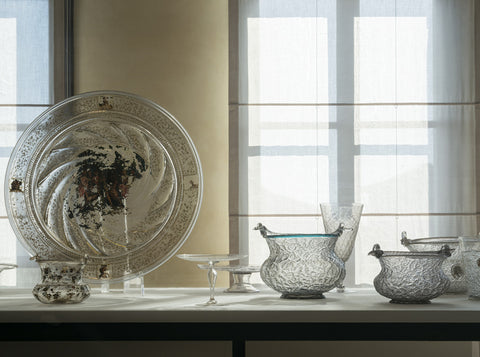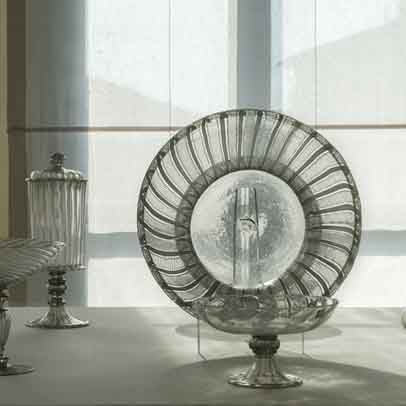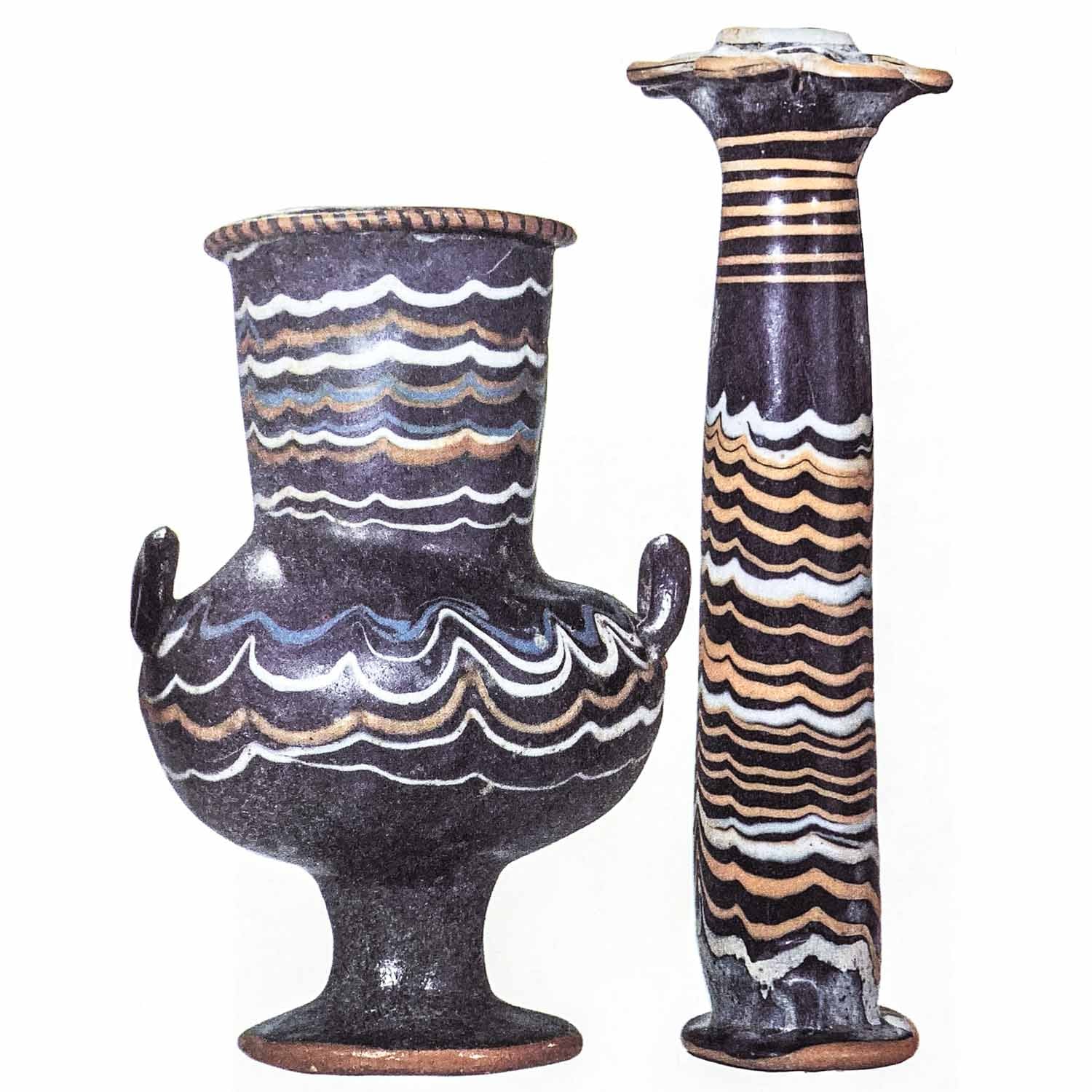Crystal is defined as clear glass.
Two main techniques for obtaining it have evolved over the centuries:
- "Cristallino" glass, obtained by Angelo Barovier in Venice in 1455.
- Lead crystal was made and perfected by George Ravencroft 1674.
Italian glassmakers, especially in Murano, produced glass of great quality, considered the best. In 1455 Angelo Barovier obtained a transparent glass for the first time in history called "cristallino".

To compete with the Venetian workshops, other European countries devoted themselves to research to obtain crystal independently.
English artisans encountered many obstacles before they succeeded.
Among the various technical difficulties involved in such an approach was the problem also of what fuel to use to melt the components, since wood was then reserved exclusively for shipbuilding, an industry as necessary for trade as for war.
In 1673 George Ravencroft set up his own manufacturing operation in London and built a furnace at the Savoy. After eight months of trials, George Ravencroft produced a lead crystal glass with characteristics similar to those of Venice's "crystal" glass.
Because of the high lead content, crystal is more expensive and more fragile than blown glass.
The prestige resulting from the discovery of a superior crystal opened the door to a partnership with the Glass Seller's Company, a union of glass merchants that monopolized the trade in England. The company had the exclusive right to sell Ravenscroft's pieces.
Related Posts:
Art glass in the world




コメントを書く
全てのコメントは、掲載前にモデレートされます
このサイトはhCaptchaによって保護されており、hCaptchaプライバシーポリシーおよび利用規約が適用されます。